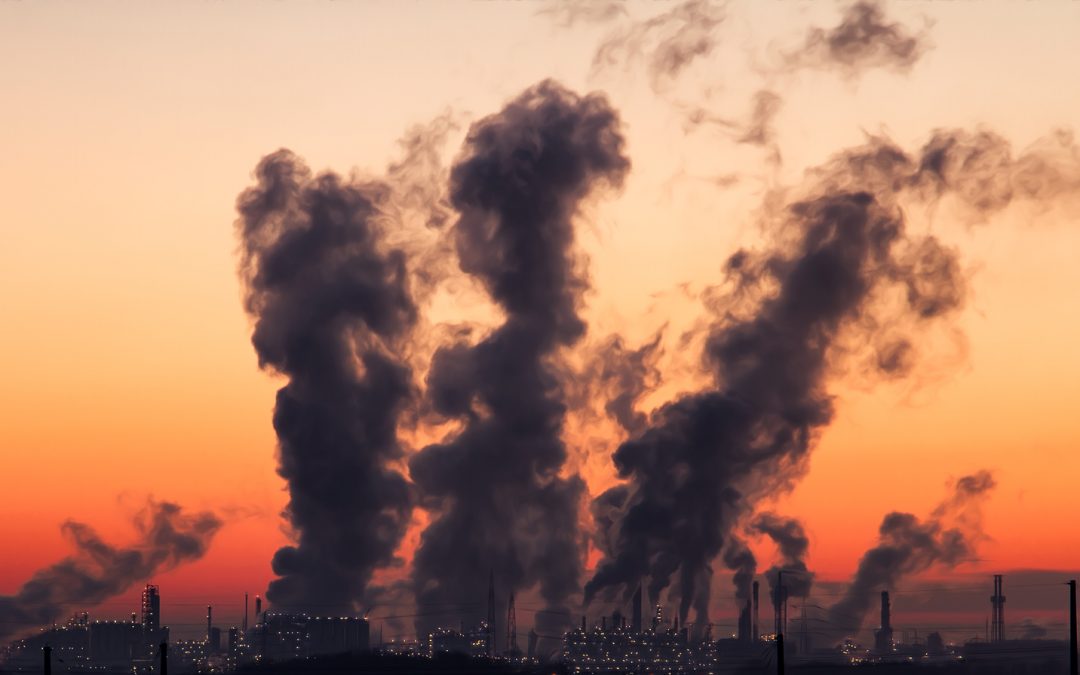Contributed by Jim Nelson, consultant to CAIRE Inc. ~ Prior to the major miracle of a lung transplant, I had emphysema and chronic bronchitis, also known as Chronic Obstructive Pulmonary Disease, or COPD. That means that my lung capacity was only a fraction of what it should have been, given my age, weight, etc. The measure of lung function is a major factor in the diagnosis of COPD. I should have been able to expel about 3 liters of air in a second. My tests revealed that I was only blowing out about 6/10 of liter, or 21% of normal.
It also meant that my respiratory system was super sensitive to air pollution in any form. That included such things as particulate matter like dust, carbon monoxide, and ground level ozone. Ozone high in our atmosphere is a good thing. It shields us from harmful burning rays of the sun. It is vital to life on Earth. Ozone at ground level can be a very bad thing, especially for those of us who have enough trouble breathing without any outside interference! Sunlight and hot weather combine with auto exhaust, gasoline vapors, degrading of paving materials, industrial emissions, and chemical solvents to form harmful levels of ozone. Ground-level ozone is the primary constituent of smog.
Many urban areas tend to have high levels of “bad” ozone, but even rural areas are subject to increased ozone levels because wind carries ozone and the pollutants that form it hundreds of miles away from their original sources. Mary and I travel Interstate 10 between Tucson and Phoenix on a regular basis, primarily for checkups with my transplant team. Not too far north of Tucson on the 120 mile trip, we can begin to see the smog from Phoenix smudging the view of the Sonoran Desert. Phoenix is one of the largest cities in America in land mass. It is huge. Not only that, but we here in the West we have the cowboy attitude of “One posterior per horse!” Traveling the multi-lane highways through Phoenix or its suburbs, the vast majority of the cars hold only the driver. Vehicle exhaust is plentiful. So is heat. Bad air affects all of us. As our population ages and the effects of tobacco use damage more and more lungs, it will become even more important to concentrate on improving the quality of our air.
Despite our best efforts, bad air will tend to find us. We owe it to ourselves to shy away from smokers, to stay indoors on bad air days, to wear a surgical mask if we are exposed to pollutants. I know, you don’t want to be seen wearing a mask. Well, this is one of those choices that I keep talking about. When you are out in the world, most people will ignore you. Your choice is to have them ignore you with or without a mask. We always have cheap surgical masks with us, and we do not hesitate to wear them at the slightest hint of nasty air. Roll up the car windows and use the air conditioner if the outside air is loaded with dust or smog. If you are exposed to dust or pollen or the like, a shower before bed is a good idea.
Try not to breathe anything that you can see …
~ Uncle Jim
Jim Nelson is a double lung transplant recipient and a patient advocate for COPD patients throughout the U.S. and around the world. He and his wife, Mary, are well known patient advocates and brand ambassadors for those organizations who tirelessly endeavor to help those individuals who suffer from a variety of respiratory diseases and the caregivers who support them.
If you have been prescribed oxygen therapy, learn more about CAIRE by visiting www.cairemedical.com or calling 1-877-704-0878 to talk to an oxygen advisor.
When using any oxygen therapy device please consult the applicable product instructions for use for product indications, contraindications, warnings, precautions, and detailed safety information.

